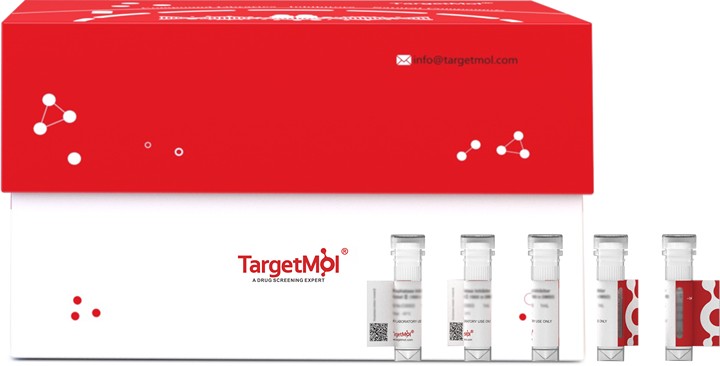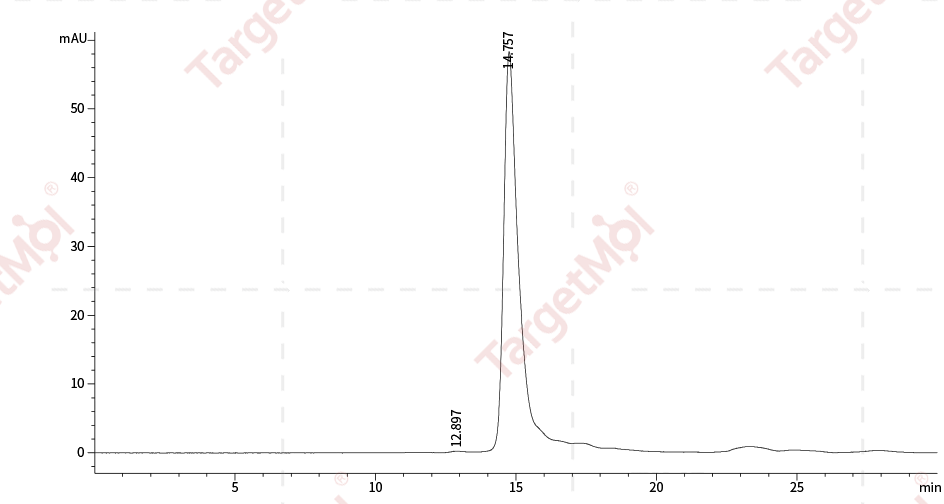Shopping Cart
- Remove All
 Your shopping cart is currently empty
Your shopping cart is currently empty

CD3 epsilon/CD3e Protein, Rhesus, Recombinant (His) is expressed in HEK293 mammalian cells with His tag. The predicted molecular weight is 12.3 kDa and the accession number is G7NCB9.

| Pack Size | Price | Availability | Quantity |
|---|---|---|---|
| 50 μg | $320 | In Stock | |
| 100 μg | $529 | 7-10 days | |
| 200 μg | $873 | 7-10 days | |
| 500 μg | $1,690 | 7-10 days |
| Biological Activity | Activity testing is in progress. It is theoretically active, but we cannot guarantee it. If you require protein activity, we recommend choosing the eukaryotic expression version first. |
| Description | CD3 epsilon/CD3e Protein, Rhesus, Recombinant (His) is expressed in HEK293 mammalian cells with His tag. The predicted molecular weight is 12.3 kDa and the accession number is G7NCB9. |
| Species | Rhesus |
| Expression System | HEK293 Cells |
| Tag | C-His |
| Accession Number | G7NCB9 |
| Synonyms | CD3e molecule, ε (CD3-TCR complex),CD3e molecule, epsilon (CD3-TCR complex),CD3 ε/CD3e |
| Construction | A DNA sequence encoding the rhesus CD3E (XP_001097204.1) CD3E extracellular domain (Met 1-Asp 117) was fused with a polyhistidine tag at the C-terminus. Predicted N terminal: Gln 22 |
| Protein Purity | ≥ 96 % as determined by SDS-PAGE. ≥ 90 % as determined by SEC-HPLC.   |
| Molecular Weight | 12.3 kDa (predicted) |
| Endotoxin | < 1.0 EU/μg of the protein as determined by the LAL method. |
| Formulation | Lyophilized from a solution filtered through a 0.22 μm filter, containing PBS, pH 7.4. Typically, a mixture containing 5% to 8% trehalose, mannitol, and 0.01% Tween 80 is incorporated as a protective agent before lyophilization. |
| Reconstitution | A Certificate of Analysis (CoA) containing reconstitution instructions is included with the products. Please refer to the CoA for detailed information. |
| Stability & Storage | It is recommended to store recombinant proteins at -20°C to -80°C for future use. Lyophilized powders can be stably stored for over 12 months, while liquid products can be stored for 6-12 months at -80°C. For reconstituted protein solutions, the solution can be stored at -20°C to -80°C for at least 3 months. Please avoid multiple freeze-thaw cycles and store products in aliquots. |
| Shipping | In general, Lyophilized powders are shipping with blue ice. |
| Research Background | T-cell surface glycoprotein CD3 epsilon chain, also known as CD3E, is a single-pass type I membrane protein. CD3E contains 1 Ig-like (immunoglobulin-like) domain and 1 ITAM domain. CD3E, together with CD3-gamma, CD3-delta and CD3-zeta, and the T-cell receptor alpha/beta and gamma/delta heterodimers, forms the T cell receptor-CD3 complex. The CD3 epsilon subunit of the T cell receptor (TCR) complex contains two defined signaling domains, a proline-rich sequence and an immune tyrosine activation motifs (ITAMs), and this complex undergoes a conformational change upon ligand binding that is thought to be important for the activation of T cells. In the CD3 epsilon mutant mice, all stages of T cell development and activation that are TCR-dependent were impaired, but not eliminated, including activation of mature naïve T cells with the MHCII presented superantigen, staphylococcal enterotoxin B, or with a strong TCR cross-linking antibody specific for either TCR-Cbeta or CD3 epsilon. T cell receptor-CD3 complex plays an important role in coupling antigen recognition to several intracellular signal-transduction pathways. This complex is critical for T-cell development and function, and represents one of the most complex transmembrane receptors. CD3E plays an essential role in T-cell development, and defects in CD3E gene cause severe immunodeficiency. Homozygous mutations in CD3D and CD3E genes lead to a complete block in T-cell development and thus to an early-onset severe combined immunodeficiency phenotype.Cancer ImmunotherapyImmune CheckpointImmunotherapyTargeted Therapy |

Copyright © 2015-2025 TargetMol Chemicals Inc. All Rights Reserved.